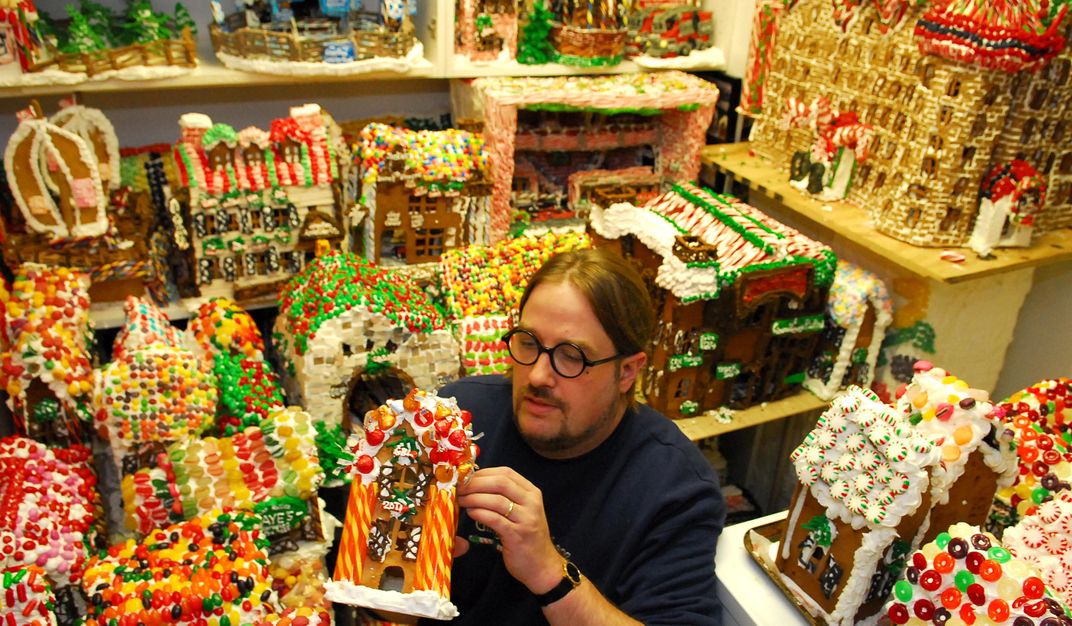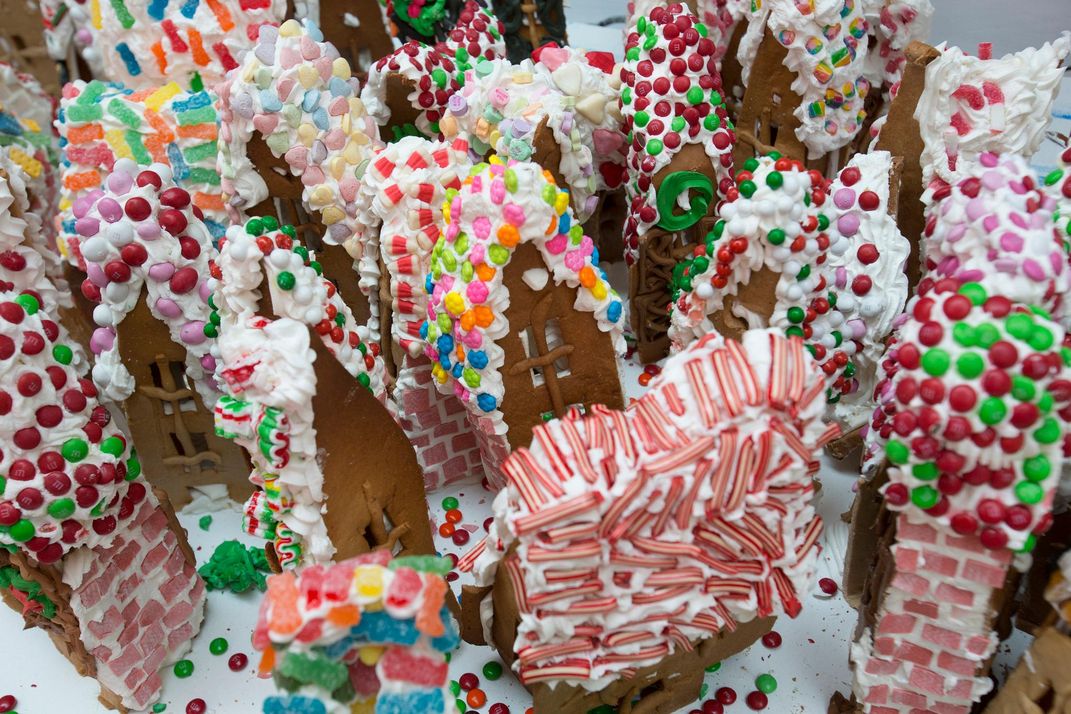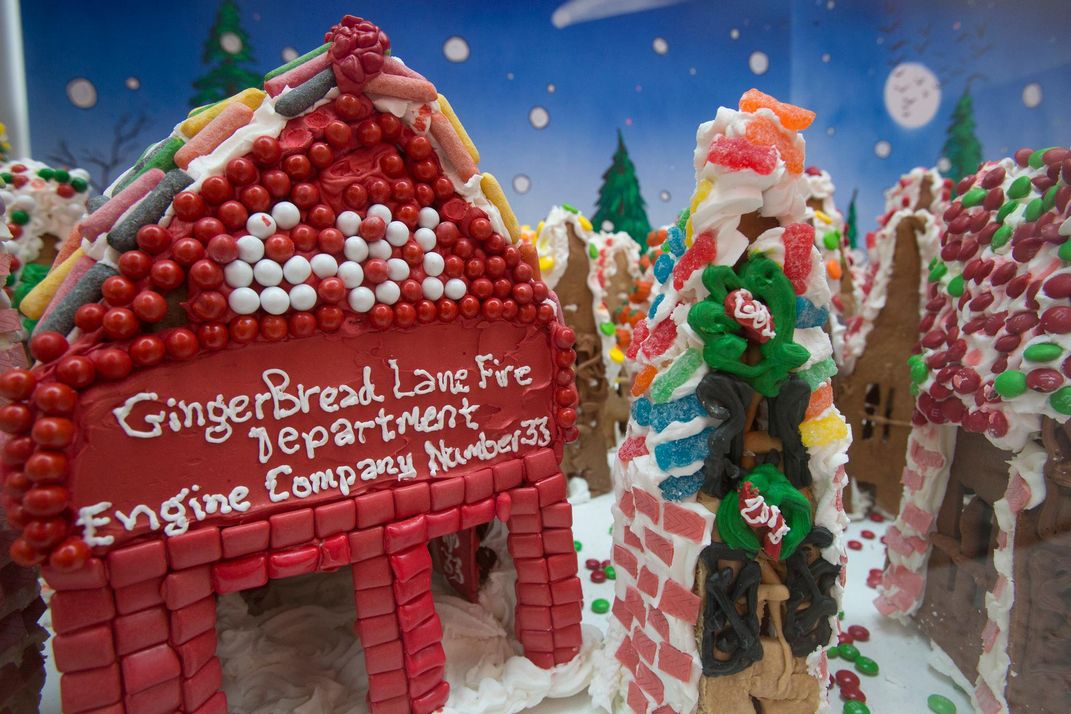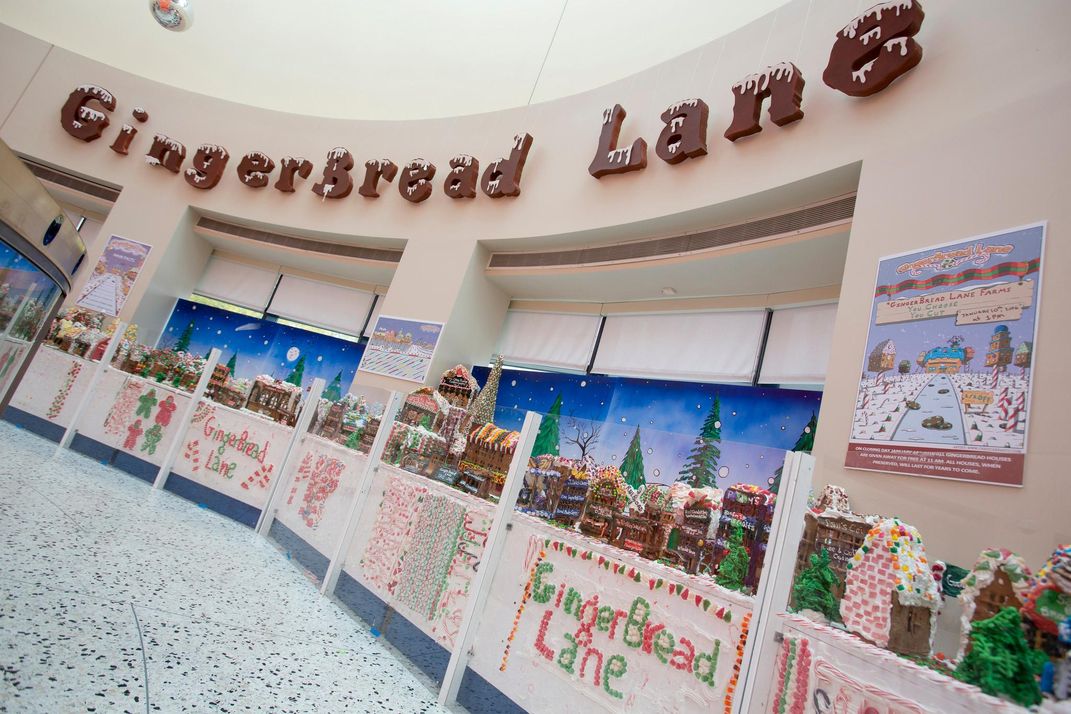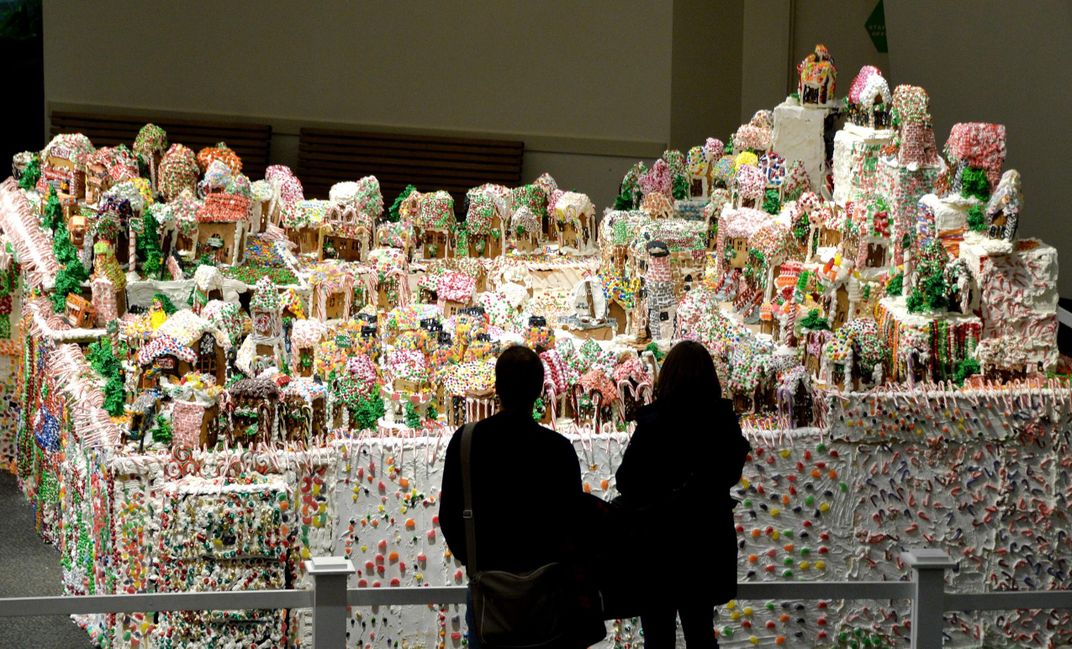Behold: The World’s Largest (Three-Ton) Gingerbread Village
Experience the glory of GingerBread Lane
The day after Christmas is typically a time for relaxation and reflection after a harried holiday season. But not for Jon Lovitch—December 26 is the day he gets started on next year’s Christmas miracle. Driven by visions of Yuletide glory, he hits up stores’ post-holiday sales and stocks up on the sugar, candy and other sweets he’ll use to build his next GingerBread Lane.
The 39-year-old chef has been building gingerbread houses since he was a teenager. But Lovitch is no run-of-the-mill gingerbread aficionado. GingerBread Lane, which is on display through January 10 at the New York Hall of Science in Queens, New York, recently broke the Guinness World Record for world’s largest gingerbread village. For the last three years, he’s won the title annually, beating out villages in Norway and other countries.
Made using 682 pounds of homemade gingerbread dough, 775 pounds of candy sourced from more than 11 countries and 3,900 pounds of icing, GingerBread Lane weighs in at around three tons and takes up 500 square feet of space. Between buying supplies, making dough and icing from scratch and decorating each of the 1,102 buildings right down to their gumdrop-speckled rooftops, the completely edible village took about 1,500 hours to construct over the course of an entire year.
“I’m a chef by trade and a food purist, so I don’t believe in using ingredients that are inedible,” Lovitch tells Smithsonian.com. “Sure, it would be much easier to build if I used Styrofoam and glue, but Guinness mandates it’s built in such a way, and that’s the same way I’ve always done it.”
When Lovitch isn’t hunched over his oven in his cramped Bronx apartment, he serves as executive chef at the historic Algonquin Hotel in Times Square in New York City. Because of space restraints in his home kitchen, he can only work in batches on nights and weekends. He makes about three pounds of icing at a time and stores his creations in a spare bedroom. As a result, his entire home smells like a Christmas bakery year-round.
“By the end of summer I can’t even smell it anymore,” he says, “but whenever I have friends over, they always comment on it.”
Lovitch’s schedule increases in intensity once July rolls around. He does the bulk of the baking during the summer. It isn’t until fall that he begins work on each structure’s details, from the intricate candy-coated rooftop of the S.C. Kringle & Co. Department Shoppe to the lifelike stonework on the exterior of a row of gingerbread brownstones. Lovitch even uses specially ordered coffee-flavored gum from Japan to simulate brown bricks.
“I try to make my village as lifelike and detailed as possible—it’s a cross between something in a Charles Dickens’ A Christmas Carol and a Tim Burton movie,” says Lovitch. Kids aren’t the only people drawn to the delicious intricacy of his gingerbread creations, he says: “Seniors are also really into it.”
GingerBread Lane’s appeal is widespread, but it can’t last forever. After several weeks delighting kids of all ages, Lovitch must dismantle GingerBread Lane on January 10. Rather than throw his creations in the trash, he invites visitors to come to the New York Hall of Science and take home buildings for free on a first-come, first-served basis.
“Taking it apart can be gut-wrenching,” he says. “You realize as you give away each piece that you’ll never see it again. Just like Christmas, it’s an ephemeral thing. A brief, fleeting moment in time.”
Planning Your Next Trip?
Explore great travel deals
Smithsonian magazine participates in affiliate link advertising programs. If you purchase an item through these links, we receive a commission.
